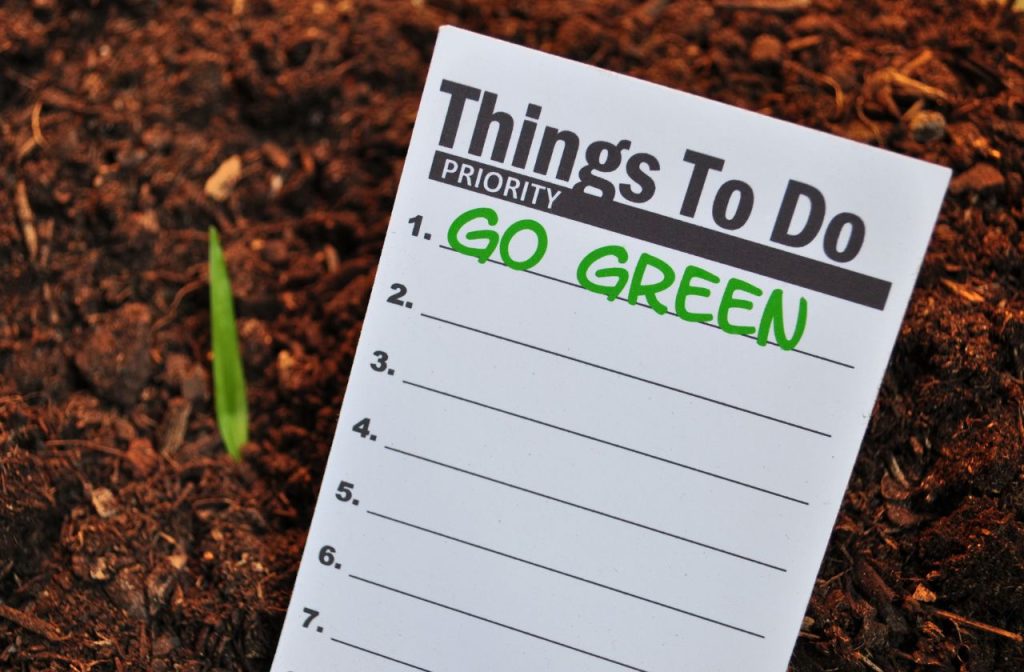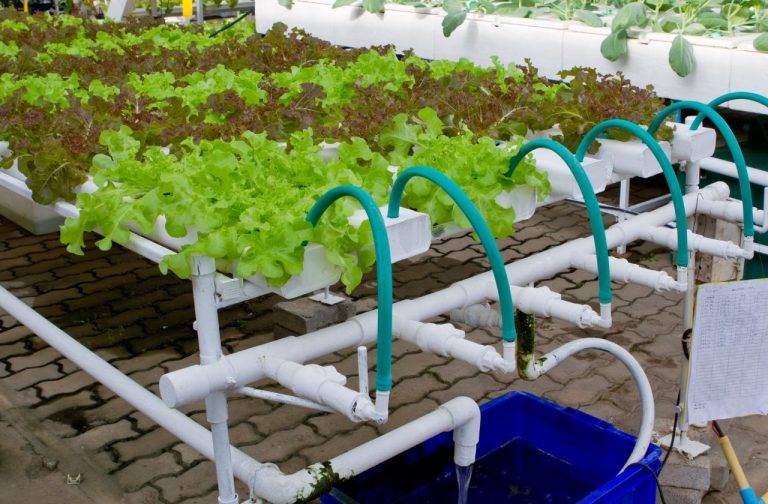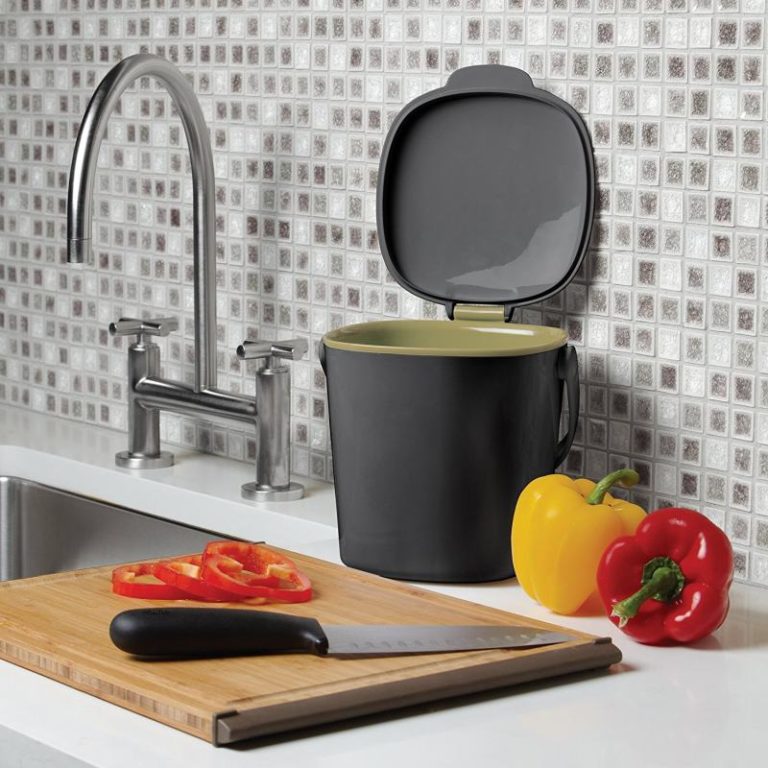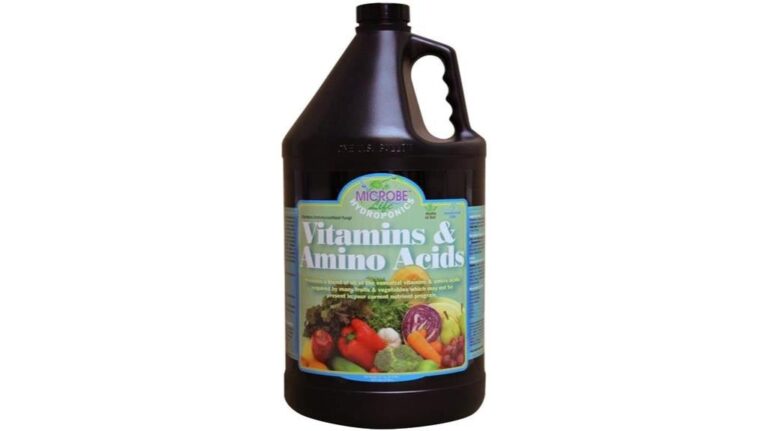Ecofriendly Vs. Green Living: What’s The Difference?
I get commissions for purchases made through links in this post. View our Affiliate Disclaimer.
In today’s world, where climate change and environmental degradation are pressing issues, the terms “eco-friendly” and “green living” have become increasingly popular. They are often used interchangeably in conversations about sustainability and environmental responsibility, but is there a difference between these two concepts?
Eco-friendly principles and green living may seem similar, but they are not the same concepts, even though they may share a common end goal. Eco-friendly typically relates to product choice and how products are made and disposed of, while green living is a commitment to a way of life.
Additional Essential Homestead Resources
✅ Medicinal Garden Kit - Grow medicine in your garden! A collection of seeds to get you started.
✅ Homesteaders Handbook - A printed book that covers all the basics for homesteaders.
✅ The Self-Sufficient Backyard - This book is an excellent resource for self-sufficiency on 1/4 acre!
✅ Into The Wild Survival Pack - Learn foundational survival skills every homesteader should know!
While eco-friendliness and green living share common goals and principles, they are not exactly the same. We will explore the nuances between eco-friendly practices and green living, shedding light on their definitions and differences and how they intersect in our pursuit of a healthier planet. Let’s explore ecofriendly vs. green living!
Understanding the Basics: Defining Eco-Friendly And Green Living

Living an eco-conscious lifestyle is a trend that is gaining popularity as people begin to understand the benefits to their bodies as well as the planet when opting for this lifestyle change.
Many sports people that require their bodies to be in top condition for their sport, such as the Formula 1 driver Lewis Hamilton, have committed to changing their lifestyle to include green living, and eco-friendly products as well as changes that benefit their overall health and performance.
An eco-conscious lifestyle is more than changing your diet, but rather encompasses a complete lifestyle change aimed at limiting negative impact on the environment as well your body.
Before we get into the differences between eco-friendly and green living, it’s crucial to understand what each term means, so a few definitions of the terms is in order.
What Is Eco-Friendly?
Eco-friendly, short for ecologically friendly, refers to products, practices, or lifestyles that cause minimal harm to the environment.
Eco-friendly items are often made from sustainable, recycled, or non-toxic materials. They are designed to reduce waste, conserve energy, and limit carbon emissions.
In essence, anything that supports the health and conservation of our planet can be considered eco-friendly.
What Is Green Living?
Green living, on the other hand, is a broader, lifestyle-focused concept. It encompasses not only the use of eco-friendly products but also a commitment to practices that reduce harm to the environment.
This could include actions like reducing energy consumption, recycling, composting, using renewable energy sources, and making conscious choices about food and transportation.
Green living is about making sustainable choices in all aspects of life, from the products we buy to the way we travel, in order to minimize our environmental impact.
We will explore how these two concepts differ and intersect and how understanding these differences can guide us toward more environmentally responsible choices.
The Core Differences Between Ecofriendly Vs. Green Living
While both eco-friendly and green living is centered around environmental sustainability, their scope, and application differ.
Understanding these differences can help us make more informed decisions about our lifestyle choices.
Eco-Friendly Activities Vs. Green Lifestyle
Eco-friendly primarily refers to activities, products, or practices that are not harmful to the environment.
This could include using products made from recycled materials, choosing energy-efficient appliances, or adopting practices that reduce waste and pollution. The focus is on minimizing the negative impact of our actions on the environment.
However, green living is a broader concept encompassing a lifestyle committed to sustainability. It goes beyond individual actions or products and involves a holistic approach to minimizing environmental impact.
This could involve making sustainable food choices, reducing energy consumption, promoting renewable energy, and advocating for environmental policies. Green living is about creating a sustainable lifestyle that is in harmony with nature.
Eco-Friendly Products Vs. Green Products
Eco-friendly products are designed to be less harmful to the environment, either through how they are made or used. They might be made from recycled or natural materials, use less energy, or produce less waste.
On the other hand, green products consider the environmental impact of the product itself and the practices behind its production and disposal. A green product considers the entire lifecycle, from sourcing materials to production, use, and disposal. It aims to minimize environmental impact at every stage.
In essence, while all green products are eco-friendly, not all eco-friendly products are necessarily green. The difference lies in the depth of commitment to environmental sustainability.
In the following sections, we’ll explore how these two concepts intersect and how we can incorporate them into our daily lives.
The Intersection Of Eco-Friendly And Green Living

While eco-friendly and green living may differ in their scope and application, they are not mutually exclusive.
In fact, they often intersect in many ways, each complementing the other in the pursuit of a more sustainable and environmentally conscious lifestyle.
How Eco-Friendly And Green Living Complement Each Other
Eco-friendly practices are often part of a green lifestyle. For instance, eco-friendly products, such as those made from recycled materials or designed to conserve energy, are key to living green.
These products help reduce our environmental footprint by minimizing waste and lowering energy consumption.
On the other hand, green living extends beyond the use of eco-friendly products. It involves making sustainable choices in all aspects of life, including diet, transportation, and energy use.
For example, choosing to eat locally sourced, organic food or opting for public transportation or cycling over driving can significantly reduce one’s carbon footprint. These practices align with the principles of eco-friendliness by minimizing harm to the environment.
Green living often involves advocating for environmental policies and sustainable practices within communities and industries. This advocacy can lead to more widespread adoption of eco-friendly products and practices, furthering the impact of individual actions.
In essence, eco-friendly practices and green living go hand in hand. Eco-friendly products and actions form the building blocks of a green lifestyle, while the broader approach of green living can drive systemic change towards greater sustainability. By understanding and embracing both concepts, we can make more informed decisions that benefit our planet.
The Benefits Of Eco-Friendly Vs. Green Living
Adopting eco-friendly practices and a green lifestyle can have numerous benefits, not only for the environment but also for our health, economy, and overall quality of life.
Benefits Of Going Green
Going green can significantly reduce your environmental footprint. By making conscious choices about the products we use, the food we eat, and the way we travel, we can reduce pollution, conserve natural resources, and contribute to the health of our planet.
Green living also has health benefits. For instance, choosing organic, locally-sourced foods can reduce exposure to harmful pesticides and promote better nutrition. Similarly, using green products can reduce exposure to toxic chemicals often found in conventional products.
Economically, going green can lead to savings over time. Energy-efficient appliances, while sometimes more expensive up front, can save money in the long term through lower energy bills. Similarly, investing in renewable energy sources like solar panels can provide long-term savings and even generate income.
Advantages Of Eco-Friendly Practices
Eco-friendly practices, such as recycling, conserving water, and using energy-efficient appliances, can help preserve our environment for future generations. These practices can reduce waste, conserve resources, and mitigate the impacts of climate change.
Eco-friendly products often have less harmful impacts on human health. They are typically free from harmful chemicals and are safer to use in our homes and workplaces.
Furthermore, supporting eco-friendly businesses can help drive market demand for sustainable products and practices, encouraging more companies and suppliers to consider the environmental impact of their processes, products, and operations.
Both eco-friendly and green living offer significant benefits. They contribute to environmental sustainability and promote healthier lifestyles and economic savings. By understanding these benefits, we can make more informed choices that align with our values and the needs of our planet.
Real-Life Examples Of Eco-Friendly And Green Living

Let’s explore some real-life examples to better understand the concepts of eco-friendly and green living. These instances highlight how these practices can be incorporated into our daily lives and their potential impact on our environment.
Eco-Friendly Homes Vs. Sustainable Homes
An eco-friendly home might incorporate elements like energy-efficient appliances, solar panels, and water-saving fixtures. It could also use eco-friendly materials such as bamboo, which is a fast-growing and sustainable alternative to traditional wood.
On the other hand, a sustainable or green home takes a more holistic approach. In addition to using eco-friendly materials and appliances, a green home might also consider the home’s location and design to reduce energy consumption.
For example, it might be located near public transportation to reduce car usage or be designed to take advantage of natural light and heat, reducing the need for artificial heating and lighting.
Environmentally Responsible Building: A Case Study
Consider the Bullitt Center in Seattle, known as one of the greenest commercial buildings in the world. This building goes beyond using eco-friendly materials and practices.
It generates its own energy through a rooftop solar array, collects and uses rainwater, and treats its own waste.
It was designed to have a long lifespan and can be easily adapted for different uses over time. This is a prime example of a green building that considers the building’s entire lifecycle and its impact on the environment.
Green Living In Daily Life
Green living can be as simple as walking or biking to work instead of driving, composting kitchen waste, or growing your own vegetables.
It could also involve advocating for environmental policies in your community, such as improved recycling programs or bike lanes.
These examples illustrate how eco-friendly practices and green living can be incorporated into various aspects of our lives, from our homes to how we commute to work.
We can contribute to a more sustainable and environmentally-friendly world by adopting these practices.
How To Incorporate Eco-Friendly And Green Living Into Your Daily Life
Adopting eco-friendly practices and a green lifestyle doesn’t have to be complicated or expensive. Here are some practical ways you can incorporate these principles into your daily life.
Tips for a More Eco-friendly Environment at Home
- Switch to Energy-Efficient Appliances: Energy-efficient appliances consume less energy, reducing your carbon footprint and saving you money on energy bills.
- Use Eco-friendly Products: Choose products made from recycled or sustainable materials. This could include everything from cleaning products to furniture.
- Recycle and Compost: Properly recycling waste and composting organic materials can significantly reduce the amount of waste that ends up in landfills.
- Conserve Water: Simple actions like turning off the tap while brushing your teeth or installing a low-flow showerhead can make a big difference in water conservation.
Steps Towards a Green Lifestyle
- Sustainable Transportation: Consider walking, cycling, carpooling, or using public transportation instead of driving. If you need a car, consider a hybrid or electric vehicle.
- Conscious Consumption: Before making a purchase, consider whether you really need the item, whether there’s a more sustainable alternative, and how it was produced.
- Eat Locally and Seasonally: Eating food that’s grown locally and in season can reduce the carbon footprint associated with transporting food from far away.
- Advocate for Green Policies: Support policies and companies that are committed to sustainability. This could mean voting for politicians who prioritize environmental policies or shopping at businesses with sustainable practices.
By incorporating these eco-friendly and green living practices into your daily life, you can contribute to a healthier planet while potentially improving your health and saving money. Every small step counts when it comes to environmental sustainability.
FAQs: Eco-Friendly Vs. Green Living
To wrap up our discussion on eco-friendly and green living, let’s address some frequently asked questions about these two concepts.
1. Are Eco-Friendly And Green Living The Same Thing?
While eco-friendly and green living are centered around environmental sustainability, they are not the same. Eco-friendly primarily refers to products, practices, or activities that are not environmentally harmful.
Green living, on the other hand, is a broader concept that encompasses a lifestyle committed to reducing overall environmental impact.
2. Can A Product Be Eco-Friendly But Not Green?
Yes, a product can be eco-friendly, but not necessarily green. An eco-friendly product is designed to be less harmful to the environment in its use or production.
A green product, however, considers the entire product lifecycle—from sourcing materials, production, use, to disposal—and aims to minimize environmental impact at every stage.
3. How Can I Incorporate Eco-Friendly Practices And Green Living Into My Daily Life?
Incorporating eco-friendly practices and green living into your daily life can be as simple as using eco-friendly products, recycling, conserving water, reducing energy consumption, and making sustainable food choices.
Advocating for green policies in your community and supporting businesses prioritizing sustainability are also important aspects of a green lifestyle.
4. What Are The Benefits Of Eco-Friendly And Green Living?
Both eco-friendly and green living offer significant benefits. They contribute to environmental sustainability, promote healthier lifestyles, and can lead to economic savings.
By reducing waste, conserving resources, and minimizing our carbon footprint, we can help preserve our environment for future generations.
The journey towards eco-friendly practices and green living is a continuous one. Every step we take, no matter how small, can make a significant difference in our pursuit of a more sustainable and environmentally-friendly world.
Conclusion
Eco-friendly practices and green living are both crucial components of environmental sustainability. While eco-friendly focuses on products and practices that minimize harm to the environment, green living takes a broader approach, encompassing a lifestyle committed to reducing our overall environmental impact.
By adopting both eco-friendly practices and a green lifestyle, we can contribute to a healthier planet, promote healthier lifestyles, and even realize economic savings. It’s about making conscious choices in our daily lives, from the products we buy to the food we eat and the way we travel, that reduce our environmental footprint.
As we move forward, let’s remember that every small step counts. Whether it’s switching to an energy-efficient appliance, recycling, or advocating for green policies in our communities, each action can make a difference. Together, we can contribute to a more sustainable and environmentally-friendly world.
Get more posts like this
Subscribe to our mailing list and get interesting homesteading and green living info and updates to your email inbox.
Thank you for subscribing.
Something went wrong.








2 Comments